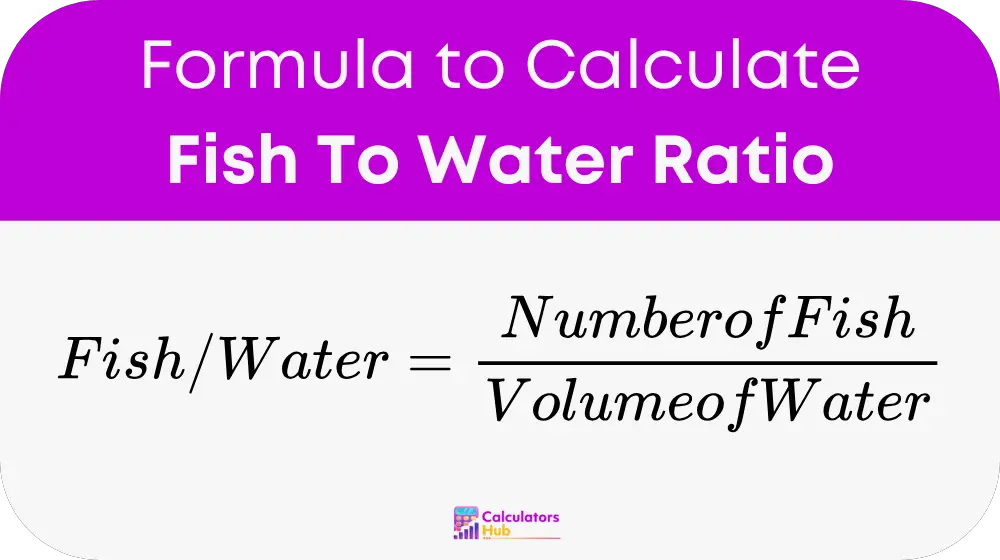The Fish to Water Ratio Calculator helps determine the ideal number of fish that can be safely housed in a given volume of water. This tool is especially useful for aquarium hobbyists, fish farmers, and aquatic researchers who need to maintain a healthy aquatic environment. An imbalanced fish-to-water ratio can lead to poor water quality, oxygen deficiency, and health issues among fish.
This calculator provides an easy way to ensure that the number of fish is appropriate for the available water volume, considering the biological load and space each fish requires. It helps avoid overstocking, ensuring that fish have sufficient oxygen and waste breakdown is manageable by filtration and natural processes.
formula of Fish To Water Ratio Calculator

Where:
Number of Fish = total number of fish in the tank or pond
Volume of Water = total water volume in liters (L), gallons (US), or cubic meters (m³)
To convert if using liters:
Fish to Water Ratio = Number of Fish / (Liters / 1000)
To convert if using gallons (U.S.):
Fish to Water Ratio = Number of Fish / (Gallons × 0.003785)
These conversions standardize the measurement in cubic meters, which is commonly used in aquaculture density assessments.
General Reference Table
| Volume Unit | Recommended Max Fish Density* | Notes |
|---|---|---|
| 10 gallons (US) | 1–2 small fish (under 3 inches) | Ideal for bettas, guppies |
| 20 gallons (US) | Up to 5 small fish | Use with moderate filtration |
| 100 liters | About 3–6 medium-sized fish | Species-dependent |
| 1 cubic meter | 10–30 kg of fish in aquaculture | Depending on species and system aeration |
*Recommendations vary based on species, filtration, and system type. Always consider oxygen needs and waste tolerance of the species.
Example of Fish To Water Ratio Calculator
Let’s say you have a tank that holds 200 liters of water, and you want to stock 10 goldfish.
Step 1: Convert liters to cubic meters
200 liters / 1000 = 0.2 m³
Step 2: Apply the formula
Fish to Water Ratio = 10 / 0.2 = 50 fish per m³
Interpretation:
50 fish per m³ may be acceptable for small goldfish in a well-aerated system, but if these are adult goldfish, this could be too high. You may need to reduce the number to maintain water quality.
Most Common FAQs
In a typical freshwater setup, a general guideline is 1 inch of fish per gallon. So, for a 20-gallon tank, you can keep up to 20 inches of fish total. However, this varies depending on species, tank shape, and filtration.
Overstocking leads to poor water quality, oxygen depletion, and stressed fish. It can also overload filtration systems, increasing the risk of disease and fish death.
Yes. Larger fish produce more waste and require more oxygen and space. Always consider both the number and average size of fish when calculating safe stocking levels.